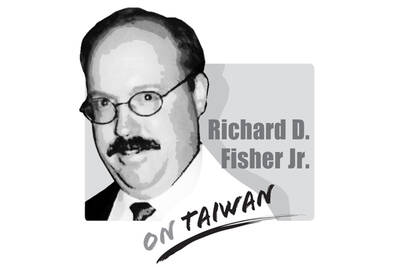There were 2,990 people killed in traffic accidents in 2021, a mortality rate of 0.000124, which is five times higher than in many other countries. Taiwan has been called “a living hell for pedestrians” in a Facebook post.
Today, civic group Vision Zero is to host a march on Ketagalan Boulevard in Taipei, calling on the government to “return the road to the people.” The idea of Vision Zero originated from the Swedish government’s “Nollvision” launched in 1997, which holds that pedestrians should be regarded as the main subject of transportation (ie, roads are for pedestrians, not cars), and drivers should be taken as the cause of all traffic accidents. Therefore, drivers should be responsible for everything, and they should be trained rigorously.
Over the past two decades, many countries have emphasized that all roads should be more “pedestrian-oriented.” Governments in Japan, Australia, Europe and the US all suggested that the improvement of road planning should be valued more than law enforcement.
However, no matter how much enforcement is done, people would break the rules. In Taiwan, drivers and pedestrians often do not abide by traffic rules.
Traffic researchers found that it would be easier for the government to implement traffic measures after the public has formed a consensus on safety. In addition to law enforcement, it is most important to re-examine road designs. Work could be done to increase the distance between sidewalks and roads, establish pedestrian refuge islands and reduce the length of sidewalks. To have cars slow down at intersections, the areas for driving and the size of lanes can be reduced, and roundabouts can be set up to replace traffic lights. The purpose is to make driving more inconvenient, so that drivers would rather not drive. It used to be believed that traffic congestion should be criticized and that the government should do more to solve the problem, but today, traffic congestion can be considered as a way to prevent more cars from running on the roads. This is an innovative concept worth thinking about. After all, pedestrians’ lives should never be sacrificed only to save a few minutes journey time for a handful of people.
The fundamental problem of Taiwan’s traffic is that the government is not enforcing the rules and members of the public do not abide by the road laws. In the past two months, the situation has greatly improved to the extent that the intersections do not need to be renovated. As long as drivers are “forced” to follow the rules and stop at crosswalks to yield the right of way to pedestrians, Taiwan would no longer be a living hell for pedestrians.
Vision Zero should advocate that pedestrians and drivers are not to be set against each other, promoting the idea that both are on the same side. Many pedestrians have never become drivers, but it is impossible for a driver to sit in a car for the rest of their life. A driver can become a pedestrian at any time and hence needs to be protected by rules. In this sense, “return the roads to the people” is not only for the sake of the pedestrians, but for everyone. Even if people rely a lot on cars and scooters, drivers should maintain their dignity as human beings.
It is hoped that Vision Zero would keep urging local governments to penalize drivers who fail to stop before intersections. This is the first step to solve the traffic problems in Taiwan. All driving lessons should also be required to instruct drivers to be vigilant and stop before crosswalks, and motor vehicle offices should not let anyone get a license if the person fails to stop at intersections.
Jeremy Wang is a physician and a founding director of the Taiwan Association of Family Medicine.
Translated by Emma Liu

As the Chinese Communist Party (CCP) and its People’s Liberation Army (PLA) reach the point of confidence that they can start and win a war to destroy the democratic culture on Taiwan, any future decision to do so may likely be directly affected by the CCP’s ability to promote wars on the Korean Peninsula, in Europe, or, as most recently, on the Indian subcontinent. It stands to reason that the Trump Administration’s success early on May 10 to convince India and Pakistan to deescalate their four-day conventional military conflict, assessed to be close to a nuclear weapons exchange, also served to
China on May 23, 1951, imposed the so-called “17-Point Agreement” to formally annex Tibet. In March, China in its 18th White Paper misleadingly said it laid “firm foundations for the region’s human rights cause.” The agreement is invalid in international law, because it was signed under threat. Ngapo Ngawang Jigme, head of the Tibetan delegation sent to China for peace negotiations, was not authorized to sign the agreement on behalf of the Tibetan government and the delegation was made to sign it under duress. After seven decades, Tibet remains intact and there is global outpouring of sympathy for Tibetans. This realization
After India’s punitive precision strikes targeting what New Delhi called nine terrorist sites inside Pakistan, reactions poured in from governments around the world. The Ministry of Foreign Affairs (MOFA) issued a statement on May 10, opposing terrorism and expressing concern about the growing tensions between India and Pakistan. The statement noticeably expressed support for the Indian government’s right to maintain its national security and act against terrorists. The ministry said that it “works closely with democratic partners worldwide in staunch opposition to international terrorism” and expressed “firm support for all legitimate and necessary actions taken by the government of India

The recent aerial clash between Pakistan and India offers a glimpse of how China is narrowing the gap in military airpower with the US. It is a warning not just for Washington, but for Taipei, too. Claims from both sides remain contested, but a broader picture is emerging among experts who track China’s air force and fighter jet development: Beijing’s defense systems are growing increasingly credible. Pakistan said its deployment of Chinese-manufactured J-10C fighters downed multiple Indian aircraft, although New Delhi denies this. There are caveats: Even if Islamabad’s claims are accurate, Beijing’s equipment does not offer a direct comparison